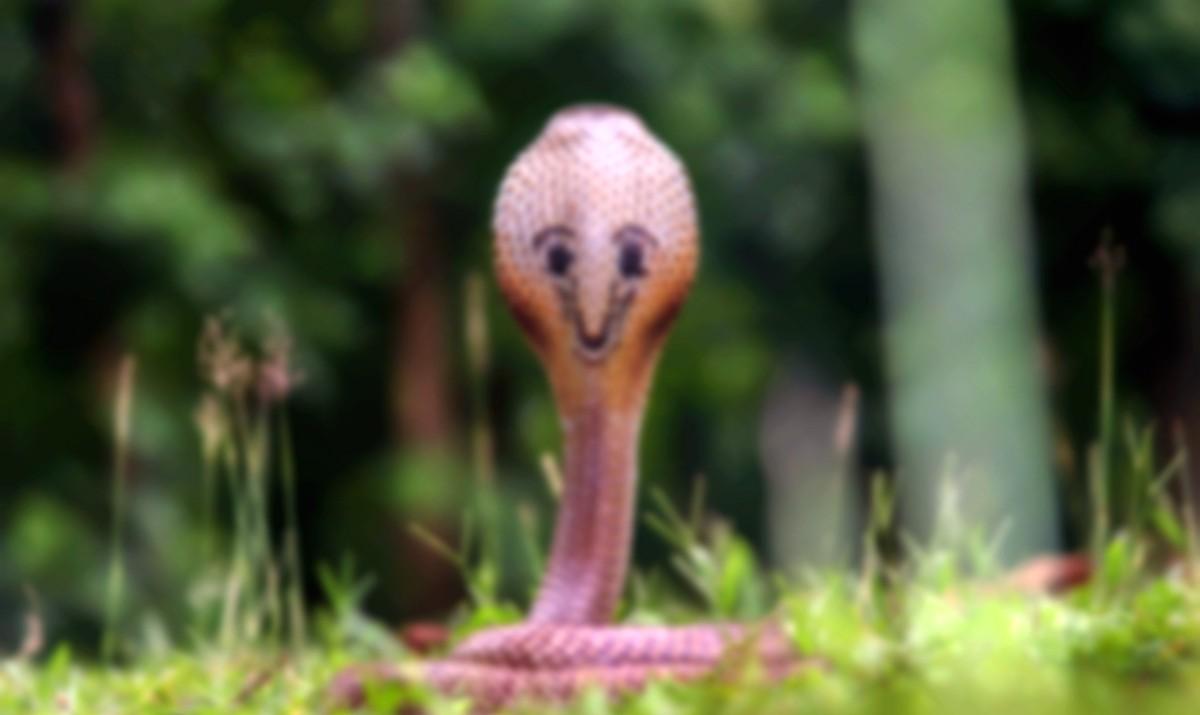In southern China, Fujian, Guangdong and Guangxi provinces, most of the country's snakes are inhabited, and the climate here is very suitable for snakes to survive and reproduce, so the number of incidents of being bitten by poisonous snakes and even killings every year has always been among the best in China.
But locals often find that in some of these snake bite cases, some people claim to have been bitten by cobras and rush to the hospital for treatment, but the injured people do not show the slightest symptom of poisoning. Some people even put on a band-aid after disinfecting the wound and get away with it, which is really surprising.
Could it be that the locals gradually evolved their resistance to poison after being frequently bitten by cobras? So what's going on here? Today @Animal Knowledge BOT will take everyone up knowledge.

<h1 class= "pgc-h-arrow-right" > bitten by a "cobra" but it was fine, it turned out to be in the "fox fake tiger wei"</h1>
First of all, among the thousands of snake species in the world, the cobra is arguably one of the easiest snakes to identify. Because the members of the cobra family basically have one thing in common, that is, when threatened or attacked, they will expand their necks to warn the enemy. This unique circular shape, combined with the pattern on the back of the snake, looks like a pair of glasses, so it is collectively known as a cobra.
And it is precisely because of this seemingly very easy to identify feature that some non-venomous snakes that are not actually of the cobra family, "fox false tigers", use the name of cobras to intimidate opponents, which is known as "pseudo-cobras" of striated oblique scaled snakes.
The striated oblique scaled snakes are called "pseudo-cobras", and listening to the name, you know that they are not actually members of the cobra family, but "counterfeits". It is a member of the genus Oblique-scaled snakes of the family Perpendicaceae and belongs to the non-venomous snake class. But many people think it is a poisonous snake.
This is because its appearance characteristics are very similar to the poisonous cobra, with the same triangular head and a swollen and expanded neck, almost to the point where it can be "faked", so the locals often mistakenly think that they are bitten by a poisonous cobra after being bitten by this non-venomous snake, so they panic and rush to the hospital to seek serum treatment, but there is no poisoning phenomenon, nothing at all.
Therefore, most of the "magical phenomena" mentioned above that are bitten by cobras but are fine are due to the "fox false tiger power" of the striated oblique scale snake.
<h1 class="pgc-h-arrow-right" data-track="4" >how, how should we tell the difference between a "pseudo-cobra" and a cobra? </h1>
In fact, the most obvious way to distinguish is to look at the pattern on the back of the snake's neck.
The pattern on the back of the cobra's neck is mostly "inverted v" or two eyes-like black-brown lines. The pattern on the back of the back of the neck of the impostor horizontal scale snake is a pagoda shape like the word "convex", and there are black stripes through the eye part. These are very different from real cobras, so it is a good way to distinguish them from the pattern on the back alone.
However, in addition to the "pseudo-cobra" to fake the real situation, there are also some non-venomous symptoms that are indeed bitten by real cobras, but there are no symptoms of poisoning, why is this?
In fact, this is because the poisonous snake is not injected with poison. Because venomous snakes do not inject venom every time they attack, after all, venom is also very important for snakes, if you consume too much venom at one time, it will not only make the snake weak, but also encounter enemies during the venom buffer period, but there is no venom in the body. Therefore, the poisonous snake does not inject venom into every attack, but selectively injects poison.
Of course, this knowledge and the way to distinguish between cobras and pseudo-cobras are all for everyone to prepare for emergencies, after all, there is no harm in learning more knowledge. But it is not to encourage everyone to meet the snake to get close to identify whether it is poisonous, if there is no 100% safe grasp, we encounter snakes or all as venomous snakes, do not try to get close, respectfully, the farther away the better, after all, safety is the most important.
Do you know more ways to distinguish between venomous and non-venomous snakes? Feel free to share it in the comments section below.
[Come and see me] @ animal knowledge BOT [than heart]